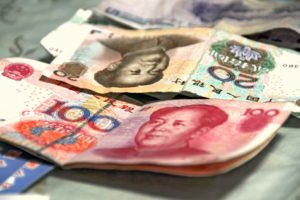
 In particular, laws in a number of Asian countries, from China to Nepal to Vietnam, have created a multi-step registration process for non-profit and philanthropic organisations, with approvals required from several government actors. And sub-national (provincial and state) governments exercise an increasing degree of oversight in registration and governance processes, often – usually! – in restrictive ways. This has always been the case in India, where the registration of societies and many other non-profits occurs at the state (sub-national) level, but is increasing elsewhere as well.
In particular, laws in a number of Asian countries, from China to Nepal to Vietnam, have created a multi-step registration process for non-profit and philanthropic organisations, with approvals required from several government actors. And sub-national (provincial and state) governments exercise an increasing degree of oversight in registration and governance processes, often – usually! – in restrictive ways. This has always been the case in India, where the registration of societies and many other non-profits occurs at the state (sub-national) level, but is increasing elsewhere as well.In addition, in many countries of the region, including China, India, Pakistan, Bangladesh and Hong Kong, we note the increasing role of security agencies in the registration process and in monitoring and enforcing rules on the non-profit community. The most prominent recent example may be the new role of the Ministry of Public Security as the overall authority for overseas NGOs and foundations in China, but the turn to ‘securitisation’ is by no means limited to single-party states like China.
A number of other measures are also used to control the non-profit sector, which includes philanthropy. In some countries, such as India, tax incentives for giving are discriminatory towards government-favored charitable organisations.
In a number of countries in the region, in China already and with proposals to do likewise in Australia, government seeks to place limits on advocacy by non-profit and philanthropic groups. This tendency is likely to be a defining feature of regulation of the civil society sector in Asia over the next several decades, and is a topic worthy of significant further research.
Exceptions to all generalisations
We noted in 2016, perhaps a bit optimistically, that ‘for every trend there is a counter-example.’ In some countries in the region, governments are increasing tax incentives for giving or otherwise encouraging philanthropy. In India and Indonesia, there is no formal bar against the formation and existence of unregistered groups. In some countries we noted ‘the development of more procedural safeguards in the registration context, including time limits for government review, requirement of a written explanation in case of refusal, rights to appeal to administrative and/or judicial bodies, and other safeguards.’
In some countries, even, registration and supervision is becoming a bit more simplified, sometimes moving from a ‘dual master’ system of management to reporting to and supervision by one government agency, though reporting requirements often remain demanding. Moore and I even note ‘pockets of progressive reform, as we’ve seen in Myanmar, where the 2014 association law decriminalises unregistered groups and affirms the principle of voluntary registration, and in Afghanistan, where the 2013 association law affirms the right to receive funding from foreign sources.’
Increasing restrictions on foreign philanthropy and foreign funding
So anxious states are trying to determine how to regulate a burgeoning and increasingly influential domestic philanthropic sector (China alone has seen several thousand foundations open their doors in recent years). At the same time, restrictions are also increasing on foreign philanthropy and other foreign non-profit activity.

‘…throughout the region foreign funders and funding are under increasing pressure.’
Limitations on foreign funding are highly differentiated by country, of course. One example is the new Chinese law on the management of overseas NGOs and foundations, which came into effect in 2017. It narrows the range of permissible channels in which foreign groups can operate in China and shifts the registration and supervision of foreign NGOs to the Ministry of Public Security (see a recent article on foreignpolicy.com).
But China is by no means the only country giving special scrutiny to external philanthropy and non-profits. Nepal, Pakistan, Bangladesh and others have also done so in recent years. The oldest and perhaps best-known set of restrictions on external philanthropy is the Indian Foreign Contributions Regulation Act, 2010 (FCRA). Some countries focus on civil society and advocacy groups, seeking to restrict foreign funding to them. Others focus more broadly on foreign funding, seeking gradually to shift giving toward more controllable domestic sources. But throughout the region foreign funders and funding are under increasing pressure.
Encouragement and anxiety
Even as anxious states increase their scrutiny of foreign funding, domestic sources of giving and philanthropic communities are growing rapidly throughout the region. Although state policies can be contradictory – often restrictive of civil society, for example – governments are also at times encouraging private giving, through laws on foundations or trusts or zakat, which may serve as vehicles to attract and disseminate private funding; through the enactment of charity laws as a way to promote public benefit activity; and through tax exemptions for CSOs as organisations or tax incentives for donors.
At the same time, governments in many parts of Asia are trying to determine what to do about an exploding fundraising environment driven by online giving which is difficult to regulate and governments have fallen far behind practices of fundraising that are increasingly rapid and sophisticated.
Often the motivations of these anxious governments are laudable – to seek to limit fraud in fundraising, for example. At times, though, governments are also eager to limit or at least understand the scope of fundraising for advocacy purposes, and at times they seek to encourage fundraising for social services while taking a different approach to rights-based advocacy. Fundraising regulation throughout the region will remain a topic worthy of significant further research in the years ahead.
Non-profit economic activity and the rise of social enterprise

KOTO is a social enterprise in Vietnam that aims to improve the quality of life for street and disadvantaged youths by providing them opportunities for skill development and empowerment. Photo: Visit.org (CC BY-NC-ND 2.0)
The regulation of the economic activities of philanthropic and civil society organisations has caused confusion and contradictory policies throughout the region. Governments approach business activities and investments by non-profits and foundations in often widely varying ways, and there remains significant controversy over the level of freedom that non-profits and philanthropic institutions should have to conduct business activities and expand their investments. In general terms, though, often after significant debate and controversy, more and more countries are allowing room for economic activities.
A number of countries, including South Korea and Thailand, are seeking to encourage the development of social enterprises through social enterprise legislation. The idea of social enterprise (and related concepts of value investing) has spread like wildfire throughout the region.
It is dangerous to attempt to summarise these developments, but two things stand out.
First, there is little doubt that all across the region, governments are behind the curve in working out how to shape and regulate a burgeoning social enterprise sector. Second, governments generally seem more comfortable with social enterprise that is conducted through a corporate form than social enterprise and its related economic activities that are conducted through the often more restricted non-profit form. The result, as a recent Guide to Social Enterprises in Asia by the Asia Philanthropy Forum notes, is that, in a number of countries around the region, social enterprises may find it easier to form as for-profit concerns than as civil society or charitable organisations.
Self-regulation – though the state retains power
Non-profit and philanthropic groups seeks counterweights to enhanced state regulation and restrictive policies on them, while also seeking to build capacity and professionalism in their sectors. These counterweights take a number of forms in the Asia region, but one that is expanding rapidly are experiments and initiatives in non-profit and philanthropic self-regulation by the sector itself.
The growth of giving across Asia far outpaces the development of the support and services that it needs to continue growing and developing in professional ways. Most of the countries in the region have no, or virtually no, philanthropic support facilities to provide capacity building in philanthropy, legal and accounting services for the growing sector.
Our 2016 report, cited earlier, identified ‘the rapid rise of self-regulatory initiatives – including umbrella association rules, codes of conduct, certification mechanisms, accreditation schemes, and ranking methods, among others,’ but noted that they ‘should not be taken to imply a weakening of state regulation’. Philanthropic self-regulatory initiatives in the Asia-Pacific region had their start in the Philippines with the Philippine Council for Nonprofit Certification in the 1980s, and a tremendous array of experiments is now underway throughout the region – in Pakistan and elsewhere in South Asia, in Vietnam and elsewhere in Southeast Asia and in most of the countries of East Asia.
In some cases, they are state-supported; in others, they are intended to persuade or force the state to slow the addition of more formal or restrictive policies. Whatever the reason for their rise, self-regulatory experiments and initiatives in Asia are clearly here to stay.[2]
Philanthropic support mechanisms remain underdeveloped
The growth of giving across Asia far outpaces the development of the support and services that it needs to continue growing and developing in professional ways. Most of the countries in the region have no, or virtually no, philanthropic support facilities to provide capacity building in philanthropy, legal and accounting services for the growing sector. Most of the region also has woefully few or much too small umbrella groups to provide philanthropic support services, or anything approaching the research and academic training necessary for a growing philanthropic sector.
India, for example, has only a handful of small centres devoted to philanthropic research and capacity building. As a 2017 report by PSJP notes, this is far from what is needed in one of the most dynamic philanthropic environments in the world. China, where thousands of non-profits have sought to register in recent years under a new Charity Law and thousands of foundations have been formed, has only a few lawyers to assist with increasing government requirements and pressure. An academic community to study philanthropy and suggest reforms is sparse in most parts of the region and where that academic community is growing rapidly, as in China, it faces increasing restrictions on academic freedom and the ability to undertake scholarly research on sensitive issues.
In all of its facets – research and data collection; legal, accounting and other support services; capacity building mechanisms; umbrella groups; academic research and understanding – mechanisms for philanthropic support remain highly underdeveloped throughout the region.
Confused and timid corporate giving
Even the fragmented data shows that corporate giving is growing around the region. And famously in India, corporate giving from companies of a certain size is now required though, in keeping with the theme of unreliable data, we have little good information on where and how companies subject to the requirement are giving. In a number of countries, including China and India, corporate giving and other CSR activities are subject to state influence, determining where donations go, and encouraging the formation of non-profits led by former government officials and others with ties to the state.

‘It is hoped, at least, that this article illuminates some of the challenges that a burgeoning philanthropic sector in Asia faces in the decades ahead.’ Photo: Dex (CC BY-NC 2.0)
More broadly, however – and there are always exceptions – in many countries around the region corporates are being careful, even timid, in their giving. They often take their lead from local and national governments. The cues are expressed in terms of favoured charities, with higher tax incentives for giving to those organisations (such as the Prime Minister’s National Relief Fund in India), and direct pressure to give quota amounts. It is rare in Asia for corporates to work on issues of social justice – a reticence, it must be noted, that is by no means confined to Asia. It may be that timid and heavily influenced corporate giving is the price to be paid for this stage of growth, but we can only hope that corporates across the region can, over time, albeit at different rates and in different ways, become bolder and more independent in their giving and eventually be able to work on questions of social change. This issue is not limited to the corporate sector. As Ingrid Srinath asks of India, though the question can be asked for much of Asia, ‘what will it take to multiply and amplify philanthropic champions of…complex and deeply rooted issues?’
Any attempt to survey the state of Asian philanthropy is likely to come up short on data or coverage. The region is so diverse, and philanthropic developments so contextualised within it that comparisons and summary are dangerous to undertake. That said, some key themes in the comparative understanding of philanthropy in Asia are perhaps gradually becoming clearer. It is hoped, at least, that this article illuminates some of the challenges that a burgeoning philanthropic sector in Asia faces in the decades ahead.
Mark Sidel is Doyle-Bascom Professor of Law and Public Affairs, University of Wisconsin-Madison and Consultant (Asia), International Center for Not-for-Profit Law (ICNL)
1Distinguished colleagues such as Wang Ming and Xu Yongguang in China, Sanjay Agarwal, Noshir Dadrawala, Pushpa Sundar and Rajesh Tandon in India, and others across the region have been central to developing advocacy, research, data and support for philanthropy in their countries over many decades. Barnett Baron, Peter Geithner, and Tadashi Yamamoto played central roles in helping to organise research, capacity building and convenings on these issues across the Asia-Pacific region beginning in the 1980s.
This article is originally published in the Alliance Magazine. https://www.alliancemagazine.org/analysis/state-asian-philanthropy/